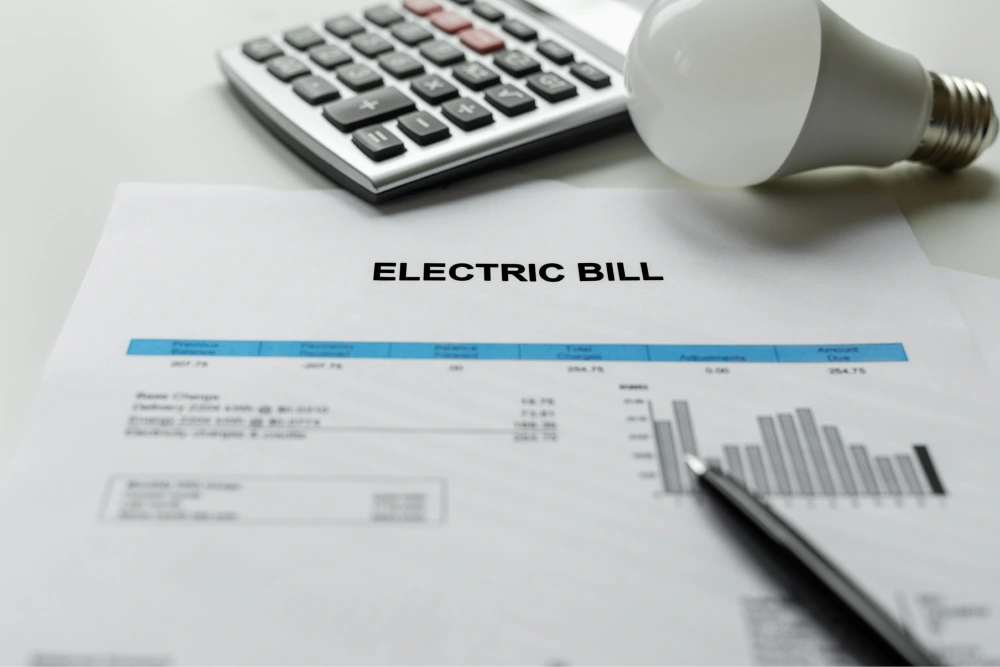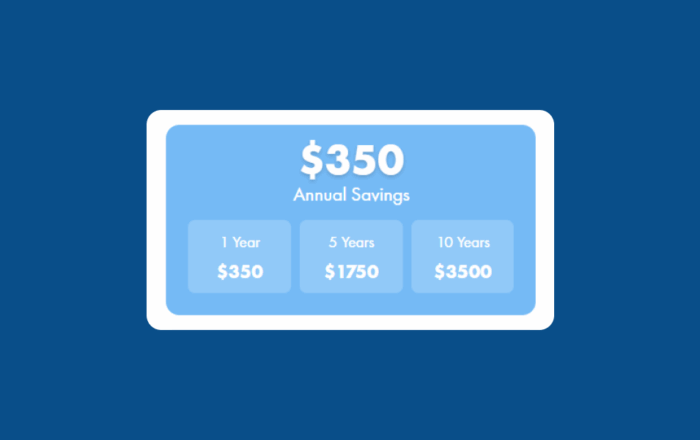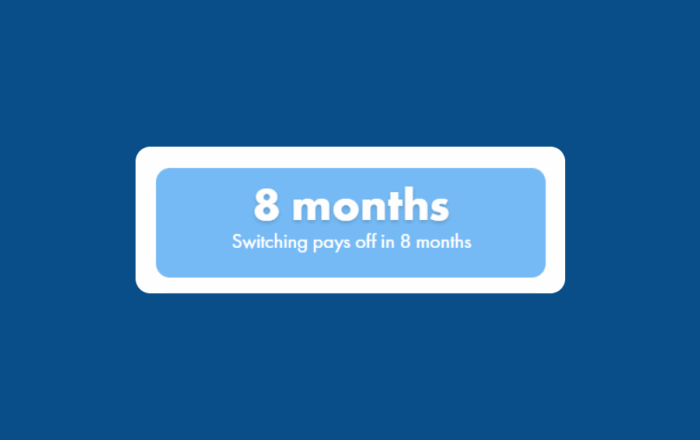Air Conditioner Upgrade Energy Savings Calculator
2 minute readHow much can you save with a more energy efficient air conditioner?
Home > BKV Energy Blog > All Posts > How Long It Takes for Electricity to Come Back After Paying the Bill
6 minute read • Last update March 2025

Nobody likes to fall behind with their bills. But occasionally, unforeseen circumstances, mishaps, and emergencies can result in non-payment.
This, in turn, can lead to the temporary disconnection of power, leaving consumers wondering: how long does it take for electricity to come back on after paying the bill?
It may take 1-48 hours for your power to be reconnected. After receiving payment for a late bill, REPs will send the reconnection order to your regional Transmission and Distribution Utility (TDU). Normally, power reconnection can occur within 1-4 hours.

After making an electric bill payment, most people are understandably eager to regain their electricity supply and get back to their regular daily routines. Will it be today? Tomorrow? Next week?
Let’s delve into all the variables that can affect how long it takes for your electricity to be turned back on following disconnection.
The time it takes for electricity to come back on after paying a bill will be influenced by the following factors:
Time of payment
Payments made during regular business hours are more likely to be promptly processed and actioned in the utility company’s systems. Payments made after business hours or on weekends or holidays may experience delays until the next business day.
Method of payment
Different payment methods have varying processing times. For example, making a payment electronically via online banking or a bank transfer by phone will be much faster than sending a physical check through the mail.
Electricity company policy
Every utility company has its own policies and procedures to work through, so the exact process may vary. The factors influencing reconnection time may include:
There’s no black-and-white answer to the question, “How long does it take for electricity to come back on after paying the bill?” It’s likely to be hours or days rather than minutes.
The final action of reconnecting electricity takes just a few seconds once the person from the power company gets to the right spot to turn the power back on. However, it can take 24-48 hours to reach that point for monthly billed customers.
Prepaid customers with digital smart meters can generally expect reconnection much quicker – typically just a few hours, provided there are no signal complications.
There are several reasons why prioritizing the timely payment of electric bills is important:
In rare cases, the reason for disconnection could lie with the energy company rather than the consumer. For example, a power outage may occur due to planned maintenance and upgrades or when power lines or other electrical equipment become damaged.
Customers will generally be notified in advance of any scheduled maintenance. Otherwise, you should report the issue to your local Transmission Distribution Utility (TDU) as soon as possible so they can send workers to your location and resolve the issue with minimal delay.
However, in the case of disconnection due to non-payment, power will not be restored until the past-due balance is cleared. The primary reason for disconnecting an individual property is non-payment of electricity bills or deviance from the agreed payment plan. However, it’s also possible to receive a disconnection notice for:
Once you’ve paid your outstanding balance, you’ll need to work through the following steps to facilitate the fastest possible restoration of your energy supply.

Contacting your utility company immediately after making an overdue payment to request a quicker restoration can expedite the reconnection timeline. Call the customer service line and inform them about the payment you’ve made, being sure to provide all the relevant details, including:
This proactive step ensures your payment is properly recorded and acknowledged so the reconnection process can be initiated promptly.
Log in to your online account or open the customer portal on your utility app, then find your way to the billing section. Check that the payment you’ve made is reflected on your account balance. Discrepancies could lead to potential issues in reconnection. So, if there’s a disconnect and your transaction isn’t reflected on your account balance, you should contact the utility company again immediately for clarification and resolution.
Your utility company may provide specific instructions or requests that you’ll need to work with to ensure a smooth and timely restoration. For example, suppose a technician needs to visit your premises to reconnect your meter. In that case, you’ll need to be home within the specified timeframe or provide instructions on how to access the house in your absence.
Experiencing electricity disconnection for the first time is stressful and inconvenient. To avoid a repeat of disruptions in the future, it’s a good idea to take proactive measures to ensure timely bill payments that guarantee a consistent electricity supply going forward. Let’s explore a few strategies and best practices.
If you haven’t done so already, it’s a good idea to enable push notifications from your utility company to ensure you receive their text or email reminders as each due date is approaching. However, to avoid relying entirely on their processes, you can also utilize personal reminder systems like:
Most utility services offer an auto-pay option, ensuring you’ll never miss a payment – assuming you have adequate credit in your account to cover each bill. By authorizing your energy provider to charge your preferred payment method each month on the due date, you can avoid the need for any manual intervention. Alternatively, you can set up automatic bank transfers or direct debit payments by contacting your bank.
Effective budgeting plays a crucial role in avoiding, managing, and reducing debt. There are several ways you can build better habits for tracking your money, including:
As we’ve established, timely payment of electricity bills is vital for maintaining access to consistent and uninterrupted energy services. However, we all need a helping hand sometimes. So, it’s essential you feel confident about reaching out to your electricity company if you’re worried about bill payment and not sure what steps to take. It’s also vital that you have a thorough understanding of your rights and responsibilities as a consumer so you can select the energy provider that’s right for you, and plan and manage your finances more effectively.
Although sending that email or picking up the phone may feel intimidating, communicating openly and transparently with your energy provider allows them to help you by exploring alternative options rather than simply issuing a disconnection notice. Examples include making accommodations for:
For example, here at BKV Energy, we have developed payment plans and a waiver program to help customers in need. In addition, we support various payment assistance programs administered by the Texas Information and Referral Network.
Knowing more about your rights and responsibilities as an energy consumer empowers you to make informed decisions. Gaining a thorough overview of your consumer rights involves learning about:
If you live in Texas, there are some additional local area guidelines you should know about in addition to the federal rules. The Public Utility Commission (PUC) is responsible for overseeing electric utilities across the state, providing guidance and support to consumers experiencing issues with their utility service.
If you’re struggling with high energy bills, consider switching to BKV Energy. By switching, you may save up to $500 per year. Enter your zip code to explore fixed rates in your area.
Texas shut off laws comprise all of the guidelines and rules we’ve covered so far with regard to:
Regulated by the PUC, Texas shut off laws are designed to protect consumers and help explore avenues for resolving payment issues while ensuring fair treatment by electric utility companies.
A Switch Hold is a measure implemented by energy businesses in Texas to prevent customers from initiating new service agreements with alternative providers before their outstanding balance has been cleared. Under Texas law, Switch Holds are required to be removed as soon as the outstanding balance is paid, and if the customer’s contract ends while a Switch Hold is in place, they must be offered the lowest-priced repayment plan available.
Texas law requires utility companies to provide customers with at least ten days’ notice, and REPS are prohibited from sending written disconnection notices any earlier than the first day after the original bill’s due date. The letter should clearly explain what will happen if payment is not received by the stated deadline and whether any payment plans are available. Special considerations apply to customers who need help paying their bills due to sickness or disability.
Although disconnections are typically a last resort, services might be cut if a customer fails to pay their REP deposit or bill within the specified time frame. Disconnection notices can also be issued in the case of an immediate safety concern, or if a customer is using, sharing, or tampering with energy-related equipment unscrupulously.
It’s essential to note that there are several specific situations under which service providers are prohibited from disconnecting consumer gas and electricity services. Examples include:
When the National Weather Service warns of poor conditions.
Graham Lumley, Digital Marketing Manager at BKV Energy, leads digital and traditional marketing strategies, focusing on educating Texans about the state's deregulated energy market. With over 8 years of marketing experience, he creates content to help consumers understand and save on their energy bills, bringing a fresh and dynamic approach to the industry.

How much can you save with a more energy efficient air conditioner?

Is it worth to pay the Early Termination Fee to switch electricity plans?
Get $50 off your electric bill!
Use code BKVEJOINUS50
Enter your zip code to shop BKV Energy's affordable, fixed-rate Texas electricity plans. Use the promo code for $50 off your electric bill.